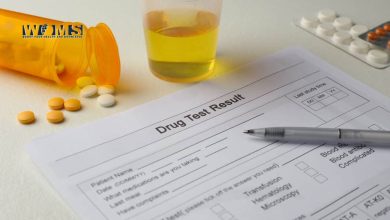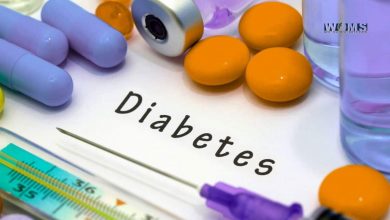How to Apply Clinical Decision Support Software in the Healthcare Industry

More healthcare providers are implementing clinical decision support software (CDSS) into their software. These tools can provide significant value for both healthcare providers and patients. Here is what you need to know about clinical decision support software systems and how to apply them in the healthcare industry.
What is clinical decision support?
Clinical decision support (CDS) is an essential tool used in healthcare to help clinicians improve their decision-making when it comes to caring for their patients.
People make countless decisions every day, from small to large. Healthcare decisions could drastically change a patient’s life, for better or for worse. This is why decision support is incredibly important. Clinical decision support software is designed specifically so that computers can sift through details on behalf of medical professionals to support them in decision-making at the point of care.
What are the different types of clinical decision support systems?
Knowledge-based CDSS
Knowledge-based clinical decision support software typically has data structured in an abundance of if-then rules. Built-in logic of the software is run using rules that take into account a patient’s “knowledge,” which means to say, a patient’s medical history and other related data.
The clinical decision support software, after running its code using that knowledge of the patient, will supply medical providers with a selection of recommendations: diagnostic suggestions, reminders, and a list of treatment options that are worth considering.
Of course, after the software is run, a human medical professional will still make the ultimate decision at the point of care.
Non-knowledge based CDSS
Unlike knowledge-based clinical decision support systems, non-knowledge-based ones operate based on advanced techniques that can find useful patterns in pre-existing historical data. With machine learning, this kind of CDSS looks towards the future and is hopeful in decreasing medical costs. However, the techniques used are both time-consuming and resource-intensive, which means that such software is much harder to implement and adopt in the healthcare industry at the moment.
The first type of technique commonly used is a genetic algorithm. Genetic algorithms randomly provide solutions to a problem and then re-evaluate and learn from the solution they chose until they manage to find out what the best solutions are for certain cases.
Artificial neural networks are also very popular they essentially mimic human neural networks. Their artificial neurons are interlinked to transmit signals across the entire network.
How is CDSS implemented in healthcare?
CDSS is often used after the medical provider inputs data, such as a patient’s ongoing medications and medical history. The clinical decision support software will analyze what is given based on prior knowledge or learning. Then, it will intervene by giving alerts or providing the provider with a list of recommended action steps (e.g., changing drug dosage). Here are some of the most common ways the healthcare industry takes advantage of CDSS to improve patient outcomes:
Drug selection
One of the major applications of clinical decision support software is how it can help providers select the right drugs for their patients. Medical errors can and do result in preventable deaths every year. CDSS can minimize the risks of the wrong drugs being selected for each individual patient, whether that means avoiding incompatible drugs, preventing prescriptions at the wrong dosages, or just incorrect treatment for conditions.
Clinical decision support software has proven to be excellent at spotting errors in drug selection. It typically takes into account important patient information such as what prescriptions and drugs they are already on, their allergy panels, their age, weight, and other important data.
Drug dosage
Duplicate therapy is also pinpointed so that patients do not receive the same drug more than once, which could easily lead to overdoses. Current patient data is taken in by the software, and the provider will be alerted of any potential dangerous conflicts. While medical professionals are thoroughly trained in administering drugs, they are still potential points of human error that can lead to disastrous consequences because of drug dosage and compatibility intricacies.
Diagnostic suggestions
When it comes to making suggestions for diagnoses, clinical decision software can save clinical providers a lot of time and effort. For example, the software can match a certain imaging result with many others done in the past and make a suggestion of what this particular imaging result may be indicative of.
Other applications
Brilliant people and organizations in the healthcare industry are constantly innovating and working to leverage Clinical Decision Support Software for better patient outcomes. CDSSs have been changing healthcare by improving diagnostic accuracy and drug selection.
Clinical decision support software and similar software are also used to more efficiently review medical studies, avoid excessive exams in hospitals, and recognize how to deal with patient symptom complications as they come up. The possibilities are nigh endless.
What are the challenges in CDSS application?
One main issue that CDSS faces in terms of application and wide-scale adoption is that this kind of software tends to exhaust a lot of time and resources to achieve acceptable levels of machine-learning results. Even though they have proven to produce excellent diagnostic support results, the healthcare industry is still slowly transitioning to implementing clinical decision support software because of the cost of adoption that hurts organization budgets.
The implementation itself can also prove to be a difficult point. Some clinical decision support software solutions are unable to easily integrate into existing workflows. Lack of interoperability is a serious issue that makes healthcare providers shy away from CDSS despite the benefits that they can bring.
We can expect these types of applications to either continue to thrive or become even more widespread in the next few years. Regardless of the application that is most impactful for each healthcare provider that uses a Clinical Decision Support Software solution, it is sure to improve care for patients and reduce stress for staff.




